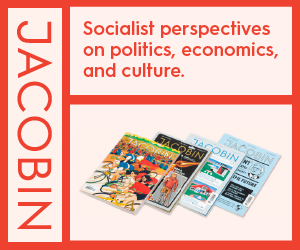Arthur Manuel’s battle against the 0.2 percent Indigenous economy
An introduction to the economic apartheid facing Indigenous communities in Canada

Arthur Manuel (September 3, 1951 – January 11, 2017). Photo by Tupac Enrique Acosta/Flickr.
The late Secwepemc leader Arthur Manuel never wavered in his certainty that land restitution was the foundation for Indigenous self-determination. Without a land base and economic rights over that base, he argued, Indigenous peoples would be destined for dependency forever.
In his book Unsettling Canada, he said the hardest thing about being a chief of the Neskonlith Indian Band for years was confronting the destitution of community members. There was nothing that one chief could do. “You know deep down that they are not going to get anywhere unless there is a major change in our society. Without outside change, they will never have the footing to climb out of the situation life has placed them in,” he wrote.

For all the talk about First Nations’ economic development, the focus of governments and the public is only ever on what Arthur called “the 0.2 percent economy.” That figure represents the total land base covered by Indian reserves in Canada. It is a tiny amount of space for more than 600 First Nations, especially given the enormous landmass of Canada.
The vast majority of this country is sparsely populated, so why have Indigenous peoples been denied jurisdiction over most of their lands?
According to Arthur, Indigenous people must rely on the 0.2 percent economy because they have been denied rights to the 99.8 percent economy, which is largely reserved for provinces to lease, permit and license forestry, mining and energy resources. Provincial governments promote resource development to accrue votes for job creation and to collect paltry revenues.
Governments also hoard the 99.8 percent to retain control over thousands of miles of roads, highways and rail lines. To retain the right to develop more lands into transportation routes and other critical infrastructure like hydro power and pipelines. To maintain close to 400,000 square kilometres of national parks and national marine conservation areas in Canada to carve out “wilderness” for tourist consumption. Canada, the provinces, and the territories don’t want Indians interfering with this political economy.
But also—importantly—they want First Nations people reliant upon the 0.2 percent economy.
If First Nations are reliant on the 0.2 percent, then they may not interfere with this business-as-usual approach to settler capitalism.
A system of control
This is the context in which Arthur urged us to understand the 0.2 percent economy: as a powerful form of control exercised over First Nations to constrain their assertions of jurisdiction to lands, territories and resources. The 0.2 percent economy is meant to lock First Nations inside the daily struggles of being fed, clothed, educated and sheltered. It is meant to dehumanize them, so that Canadians can forget that First Nations poverty is made in Ottawa, so they can point fingers at systemic deprivation and call it “failing.”
The fact is too many Canadians are born on third base and are celebrating like they got home runs.
This series will explore Arthur Manuel’s concept of the 0.2 percent economy.
The second part in this series—“Permanent Austerity and Fiscal Brutality: Federal Transfer Payments”—surveys the coercive use of federal transfer payments to keep First Nations in systemic poverty. A lot has been written on the funding disparities between First Nations living on reserve and Canadians. The basic structure of this disparity will be examined here.
The third part in this series—“Mercenary Colonialism: Third-Party Management”—explores the most extreme use of federal transfer payments. Third-party management is when a band’s federal transfer payments are handed over to external accountants, who are paid lucratively out of band funds but answerable only to Indian Affairs. There is almost no oversight or accountability by these accounting firms to First Nations bands, and it’s often a veritable pillage. The imposition of third-party management is a powerful tool in the federal government’s belt to gain control over bands that step out of line.
The fourth part in this series—“How Racism Frames First Nations’ Economic Rights Today”—will focus on the meaning of economic rights for First Nations through law and legislation. While most legislation focuses on the 0.2 percent economy, and the courts have been reluctant to admit any commercial rights to First Nations, there are cracks where some hope can filter in.
These articles raise an important question: What does it mean to talk about the 99.8 percent Indigenous economy? What is the nature of Canada’s economy, and how has the country’s reliance on natural resource extraction and exports conditioned settler colonialism in distinct ways? How has Canada sought to mitigate the risk of obstruction to its political economy by Indigenous assertions of jurisdiction over their territories? What happens when Indigenous peoples assert and exercise economic jurisdiction off reserve? And who are the communities at the forefront of this struggle to do so?
The fifth and final part in this series—“The Indigenous 99.8 PerCent Economy: Shining a Light Ahead”—will conclude the series with examples of communities that are exercising economic jurisdiction over their national and local territories through sheer will, determination and often brutal contestation.
This article originally appeared on Ricochet.media.










